Potřebujeme váš souhlas k využití jednotlivých dat, aby se vám mimo jiné mohly ukazovat informace týkající se vašich zájmů. Souhlas udělíte kliknutím na tlačítko „OK“.
ASTM F2028-14
Standard Test Methods for Dynamic Evaluation of Glenoid Loosening or Disassociation
Automaticky přeložený název:
Standardní zkušební metody pro dynamické hodnocení glenoidu uvolnění nebo disociaci
NORMA vydána dne 1.3.2014
Informace o normě:
Označení normy: ASTM F2028-14
Poznámka: NEPLATNÁ
Datum vydání normy: 1.3.2014
Kód zboží: NS-52510
Počet stran: 15
Přibližná hmotnost: 45 g (0.10 liber)
Země: Americká technická norma
Kategorie: Technické normy ASTM
Kategorie - podobné normy:
Anotace textu normy ASTM F2028-14 :
Keywords:
arthroplasty, glenoid, loosening, subluxation, total shoulder replacement, arthroplasty, disassociation, glenoid, subluxation, total shoulder replacement, arthroplasty, glenoid loosening, reverse total shoulder replacement, subluxation, ICS Number Code 11.040.40 (Implants for surgery, prothetics and orthotics)
Doplňující informace
| Significance and Use | ||||||
|
5.1 This test method is intended to investigate the resistance of a glenoid component to loosening. Glenoid loosening is the most common clinical complication in total shoulder arthroplasty (see X1.1). The method assumes that loosening occurs because of edge loading, often called the rocking-horse phenomenon. 5.2 This test method can be used both to detect potential problems and to compare design features. Factors affecting loosening performance include articular geometry, flange geometry, materials, fixation design, bone quality, and surgical technique. |
||||||
| 1. Scope | ||||||
|
1.1 These test methods measure how much a prosthetic anatomic glenoid component rocks or pivots following cyclic displacement of the humeral head to opposing glenoid rims (for example, superior-inferior or anterior-posterior). Motion is quantified by the tensile displacement opposite each loaded rim after dynamic rocking. Similarly, these test methods measure how much a prosthetic reverse glenoid component rocks or pivots following cyclic articulation with a mating humeral liner. Motion is quantified by the magnitude of displacement measured before and after cyclic loading. 1.2 The same setup can be used to test the locking mechanisms of modular glenoid components, for example, disassociation of both anatomic and reverse shoulder components. 1.3 These test methods cover shoulder replacement designs with monolithic or modular glenoid components for cemented fixation as well as reverse glenoid components for uncemented fixation. 1.4 The values stated in SI units are to be regarded as standard. No other units of measurement are included in this standard. 1.5 This standard does not purport to address all of the safety concerns, if any, associated with its use. It is the responsibility of the user of this standard to establish appropriate safety and health practices and determine the applicability of regulatory limitations prior to use. |
||||||
| 2. Referenced Documents | ||||||
|
Podobné normy:
Historická
1.11.2013
Historická
1.6.2013
Historická
1.1.2012
Historická
1.10.2013
Historická
1.10.2012
Historická
1.10.2013
Odebírejte informace o nově vydaných normách ZDARMA:
Chcete pravidelně odebírat informace o nově vycházejících normách z celého světa a to zcela zdarma?
Přihlašte se k odběru. Vše je velice jednoduché a absolutně ZDARMA.
Na výběr máte vydavatele z celého světa.


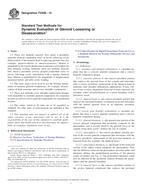
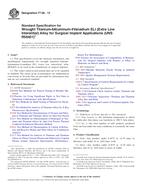 ASTM F136-13
ASTM F136-13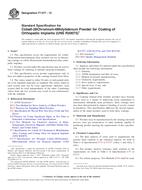 ASTM F1377-13
ASTM F1377-13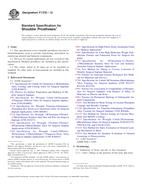 ASTM F1378-12
ASTM F1378-12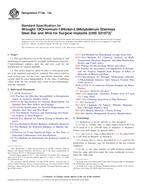 ASTM F138-13a
ASTM F138-13a ASTM F139-12
ASTM F139-12 ASTM F1408-97(2013)..
ASTM F1408-97(2013)..
 Cookies
Cookies
